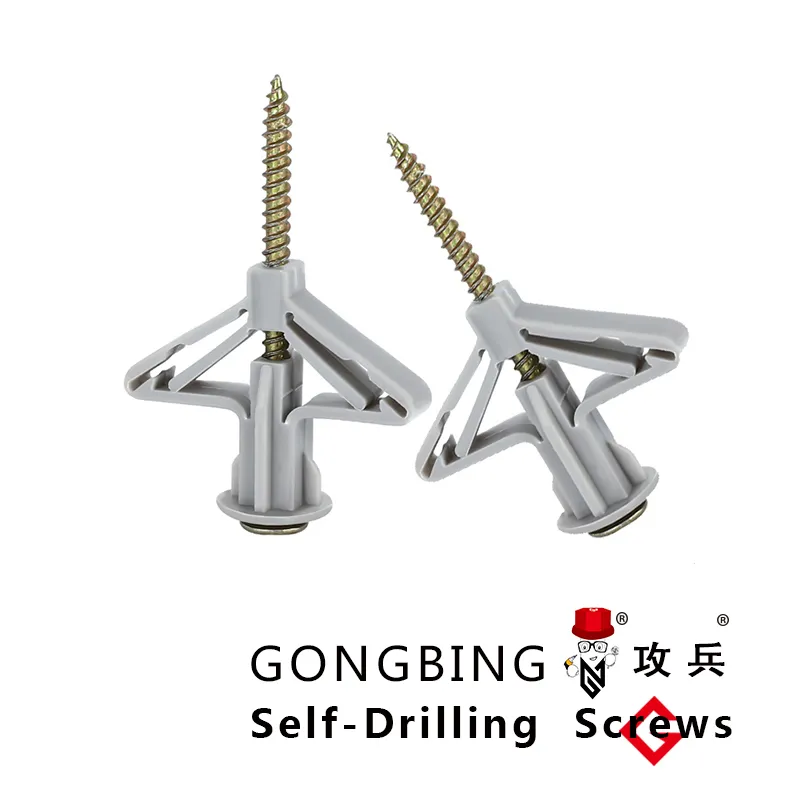Smart Expansion Anchors
Modern construction and manufacturing rely heavily on mechanical fasteners to create secure, reliable connections between materials. Among the most innovative solutions are expansion anchors, expanding screws, expansion anchor plastic, expansion screw plastic, and expanding drywall anchor systems. These technologies have revolutionized how we approach structural connections, offering solutions for everything from heavy industrial applications to delicate interior installations. This article examines these five key fastener types, their unique properties, and their optimal applications in today's building environment.

The Mechanics and Uses of Expansion Anchors
One of the main features of expansion anchors is its versatility. They can be used on a variety of materials, including drywall, concrete, brick, and more. With this product, you can rest assured that your fixtures and fittings will remain stable and secure for years to come.
For example, expanding butterfly wing anchors are very easy to use. Simply drill a hole, insert the anchor, and tighten it into place. No special tools or complicated processes are required. This user-friendly design ensures you can complete your project quickly and efficiently.
Mukuwedzera kune simba rayo uye nyore kushandisa, anchor iyi inewo chimiro chechimiro uye chisingaoneki. Kana yangoiswa, inogara nemadziro kuti itaridzike yakachena, yehunyanzvi. Izvi zvinoita kuti zvive zvakanaka kune zvekutengesa uye zvekugara zvikumbiro.
Kana zvasvika kune anchoring solutions, akanakisa arikurisa mapapiro e butterfly anchor ari kure nekure akanakisa. Simba rayo repamusoro, kuita zvakasiyana-siyana uye nyore kushandisa kunoita kuti ive-inofanirwa kuve nayo kune chero kit yekushandisa. Taura zvakanaka kune zvibatiso zvisina kuvimbika uye uwane runyararo rwepfungwa nechigadzirwa chakanakisa ichi. Zviedze iwe pachako uye uwane mutsauko wazvinogona kuita muprojekiti yako.
How Expanding Screws Enhance Structural Stability
Expanding screws combine the functionality of screws with the anchoring mechanism of expansion systems. Unlike traditional screws, they feature a unique thread design that expands upon insertion, locking into materials like wood or lightweight concrete. This makes them suitable for applications requiring both tension and shear resistance, such as securing fixtures or panels. Their versatility extends to temporary installations, where removability is needed without compromising strength. The tapered end ensures easy insertion, while the expansion mechanism prevents loosening over time.
The Role of Expansion Anchor Plastic in Lightweight Applications
Expansion anchor plastic variants are designed for lighter materials like drywall or hollow blocks. Made from durable polymers, these anchors resist corrosion and are electrically non-conductive, making them ideal for electrical fixtures or indoor installations. Their flexibility allows for slight material movement without losing grip, reducing the risk of cracking. Installation involves pushing the anchor into a pre-drilled hole, where it expands as the screw is inserted. These are cost-effective solutions for low-to-medium load requirements, such as shelving or decorative elements.
Innovations in Expansion Screw Plastic for Versatile Fastening
Expansion screw plastic units integrate the expansion mechanism directly into the screw, eliminating the need for separate anchors. Commonly used in DIY projects, they simplify installation by combining drilling and fastening into one step. The plastic composition reduces weight and avoids galvanic corrosion when used with metal substrates. Applications include securing lightweight frames, signage, or insulation boards. Their ribbed design ensures uniform expansion, distributing pressure evenly to prevent material damage.
FAQs About Mechanical Fasteners
What distinguishes expansion anchors from traditional anchors?
Expansion anchors rely on radial expansion against the base material, offering higher load capacity than adhesive or wedge anchors. They are preferred for solid substrates like concrete.
And expanding nuts for sheet metal provide threaded fastening solutions for thin metal sheets where welding or threading isn’t feasible. These nuts insert into pre-punched holes and expand radially when tightened, creating a secure thread. They are common in automotive, aerospace, and HVAC systems, accommodating vibration-prone environments. The knurled exterior enhances grip, while the material (often steel or brass) ensures durability. Their reusable nature makes them advantageous for modular assemblies.
Can expanding screws be reused?
Most expanding screws are designed for single-use due to deformation during installation. However, some plastic variants allow limited reuse in low-stress applications.
Are expansion anchor plastic products suitable for outdoor use?
While resistant to moisture, prolonged UV exposure can degrade plastic anchors. UV-stabilized versions are recommended for outdoor durability.
How do expanding drywall anchors handle weight fluctuations?
Their toggle mechanism distributes dynamic loads, but exceeding the rated capacity may cause wall damage. Always check load charts before installation.
What materials are used in expanding anchor for sheet metal?
Common materials include steel (for strength) and brass (for corrosion resistance). Coatings like zinc or nickel further enhance performance.
The future of construction demands smarter, stronger fastening systems. By embracing these advancements, the industry can create structures that meet evolving requirements while ensuring long-term durability. Your projects deserve fastening solutions that match your vision - implement these technologies to build with confidence.
-
Weatherproof Plastic Expansion Anchors for OutdoorNewsJun.06,2025
-
Sustainability in the Supply Chain: Eco-Friendly TEK Screws ProductionNewsJun.06,2025
-
Load-Bearing Capacity of External Insulation FixingsNewsJun.06,2025
-
Double Head Bolts: Enhancing Efficiency in Industrial MachineryNewsJun.06,2025
-
Corrosion Resistance in Chipboard Screws: Coatings for Wholesale DurabilityNewsJun.06,2025
-
Butterfly Toggle Bolts : Enhancing Structural ResilienceNewsJun.06,2025
